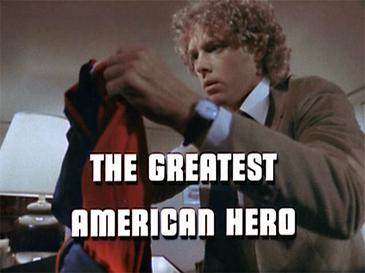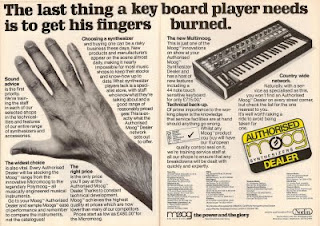Update: Added to the Sequential Circuits advertising timeline tool.
Well - we are headed into the August long weekend. And you know what that means... shorter blog posts! It's just too nice out to be blogging much. Gah!
Not sure if I've made this clear or not, but I consider Sequential Circuits Inc. kind of a big deal. Some people out there may agree... :D
This makes it tough for me to not only keep the blog post short, but to say anything bad about the company, or any of SCI's gear - in particular the Pro-One. Luckily, its very rare that I find something to complain about when it comes to SCI. And its usually something very trivial. This brochure is a perfect example of that.
Putting the interesting choice of front cover images aside for a second, the only thing I can really fault this brochure for is that there is no date stamp anywhere. And really, how would SCI know I would be looking for it 30 years later?
Other companies like Roland are great for date stamps on their brochures and other printed material. They often included the year as well as the MONTH (!) - as can be found on the back of these brochures for the TL-12, this 808/606/303 rhythm machines and SH-101.
But SCI... not so good. Luckily, SCI has some pretty distinct and consistent advertising periods, so spec sheets like this one are usually easy to date without resorting to carbon dating or some other costly scientific method that might destroy the test material.
Just look at the advertising for the Pro-One over time and I'm sure you can pick out when this brochure was probably designed.
 |  |  |  |
| March 1981 | July 1981 | February 1982 | October 1982 |
Yeah, I'm probably thinking what you are thinking. Based on these ads, this brochure was no doubt created relatively early on in the Pro-One's life cycle - ie: early 1981. And that would make sense, since a spec sheet would usually be created when a new synth was first introduced, or after a significant update to the design.
So, back to the spec sheet itself. One word - gorgeous. Kick's the butts of the reference sheets of most other companies. In fact, the design of the piece actually makes it feel more like a brochure, so I've included that label for this post as well.
About that front page for a sec. Somehow it just doesn't look that balanced. I can see why they've chosen those three view points for the photos of the Pro-One. Front view, angled view, and kind of a side view. But, that last photo doesn't really provide much more visual info that can't be found in the angled view.
But all is forgiven when you turn the page to view that gorgeous full two-page spread of the Pro-One's control panel. Honestly - how beautiful is that. And below readers find all the juicy specs. You just can't beat it.
And, what I find best of all - in the top right corner of the inside pages, SCI mentions the digital interface. I've always been fascinated with this addition to the Pro-One. Excellent! You can find out more about this feature in most online manuals.
The back page doesn't disappoint either. You can see all back panel connections clearly, and the logo on the back with the quarter notes in the trees and the keyboard key's wrapping around the hilly cropland, also help date the spec sheet to the same period as that early 1980's advertisement that also sports that same logo.
Also, note that only the top half of the back page contains technical information. The only info on the bottom half is the return address - meaning that this piece was obviously meant to be folded in half for easy mailing. Efficient.
Like I said - gonna keep 'er short. And almost did!
Time to enjoy the outdoors. Doesn't last long here.

















